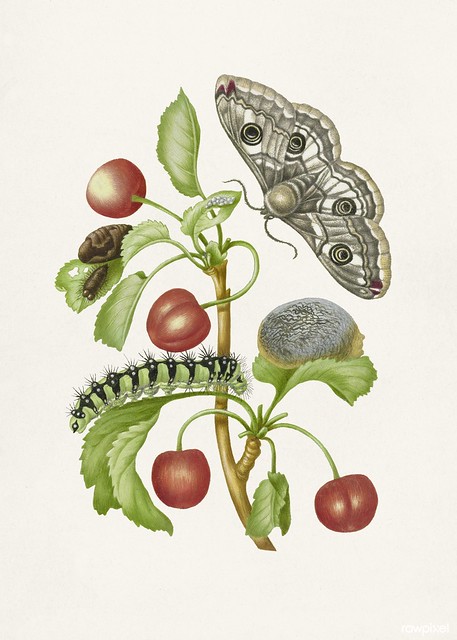Hello,
Today we wanted to tell you all about Maria Sibylla Merian.
Today we wanted to tell you all about Maria Sibylla Merian.
Maria was born in Germany on 2nd April, 1647. Like many young girls at that
time, she loved to paint. Every day she would gather flowers from her garden
and paint them. Sometimes, the flowers would have caterpillars on them and she
would paint them changing, day by day, into butterflies.
At that time, not much was known about insects, and people thought that
butterflies magically sprouted from the mud. Maria knew from what she had seen
while she was painting, that this was not true, but no-one believed her.
As time went by, Maria became a great watercolour artist. She wrote about her discoveries, but scientists only took books written in Latin seriously, and Maria wrote hers in German. When Maria and her daughter were living in Amsterdam, Maria found display cases in museums filled with exotic insects collected from South America. Maria thought that if she could study the butterflies in their natural habitat people might notice her book.
So, they moved to America. In the Suriname rainforests, Maria and her daughter climbed trees to look at the insects that lived higher up. This time, Maria wrote a book in Latin and it was a huge success. People finally learned that butterflies and moths came from caterpillars and not mud!
Maria died in 1717, just over 300 years ago, but her work still plays an important part today and thanks to her we now know that many other animals also go through metamorphism including frogs, beetles and crabs.
As time went by, Maria became a great watercolour artist. She wrote about her discoveries, but scientists only took books written in Latin seriously, and Maria wrote hers in German. When Maria and her daughter were living in Amsterdam, Maria found display cases in museums filled with exotic insects collected from South America. Maria thought that if she could study the butterflies in their natural habitat people might notice her book.
So, they moved to America. In the Suriname rainforests, Maria and her daughter climbed trees to look at the insects that lived higher up. This time, Maria wrote a book in Latin and it was a huge success. People finally learned that butterflies and moths came from caterpillars and not mud!
Maria died in 1717, just over 300 years ago, but her work still plays an important part today and thanks to her we now know that many other animals also go through metamorphism including frogs, beetles and crabs.
Sources:
https://en.wikipedia.org/wiki/Maria_Sibylla_Merian
https://www.nhm.ac.uk/discover/maria-sibylla-merian-metamorphosis-art-and-science.html
Image: This image, owned by Rawpixel Ldt (on flickr.com), is licensed under CC BY 2.0.
https://en.wikipedia.org/wiki/Maria_Sibylla_Merian
https://www.nhm.ac.uk/discover/maria-sibylla-merian-metamorphosis-art-and-science.html
Image: This image, owned by Rawpixel Ldt (on flickr.com), is licensed under CC BY 2.0.


Comments
Post a Comment